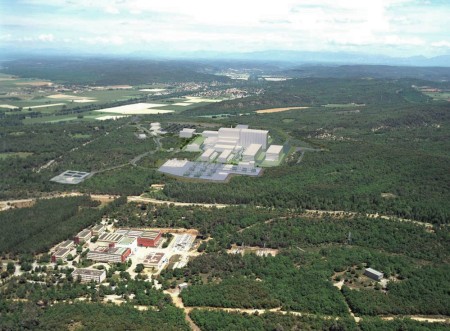Recently appointed the director of Fusion for Energy - the agency that will manage the €4bn contributions from European countries to the International Thermonuclear Experimental Reactor in Cadarache, France - Didier Gambier knows more than most about the development of fusion. Jon Cartwright reports.

You’ve had many jobs, including being a scientific advisor on the International Thermonuclear Experimental Reactor (ITER) and on the Joint European Torus, the largest fusion experiment currently in operation. What’s the most important role you’ve had?
After the fall of the Soviet Union I was part of an international team that helped convert Russian weapons scientists to peaceful activities. The challenge was to prevent them from being “brain drained” to unstable countries by finding them jobs in the civil environment. It was extremely challenging and political from a managerial point of view, which really prepared me for the job I have today.
One example was when – with help from a friend at CERN – we restructured a company that was making crystals for laser-guided weapons to make crystals that will detect the Higgs boson in the CMS experiment at the Large Hadron Collider.
It’s not easy to work with former military scientists. They would say “Well, it’s fine to convert my activities, but I am not going to build a washing machine!” It wouldn’t have been challenging enough for them.
Is the project over now?
No, but it is in the process of some restructuring. The situation in Russia today is completely different from ten years ago.
What first interested you in fusion?
After I graduated from the Ecole Normale Supérieure in 1980 I became concerned about the consumption of oil and the need to develop alternative energy systems. Originally I was attracted to solar power, but when I was looking to start a PhD I came to meet very good people that were dealing with fusion. Its difficulty and complexity engaged me right from the start.
What are your challenges as director of Fusion for Energy?
I want to create an organization that is efficient, effective and economic. And I want it to be respected by the ITER community, the equivalent non-European national agencies and the network of laboratories and industries in Europe. Fusion for Energy is the largest agency because Europe is the largest contributor – we provide about 50% of ITER’s money, components and personnel.
But Fusion for Energy is not limited to ITER – we’ve also established a partnership with Japan on “Broader Approach” activities. These will help to construct a future prototype-material test facility, a tokamak and a computing centre. In the longer term, Fusion for Energy will then help to organize the construction of the first demonstration or “DEMO” fusion power plant some years from now. For me, ITER will be an excellent benchmark to prepare for the future construction of other fusion reactors that will eventually go on the market worldwide.
If we’re successful we will have accumulated an enormous amount of experience
What is the current status of ITER?
So far we’ve cleared the Cadarache site and are drawing up the contract that will allow us to start excavating, and we’re preparing a specification for the tokamak and other buildings. Because the design of the facility had to remain somewhat generic until an agreement was reached on where to locate the facility two years ago, ITER is now completing a review to adapt it to the particulars of the Cadarache site.
One of the pioneers of tokamak research, a Soviet physicist called Lev Artsimovich, once said: “Fusion will be here when society needs it.” So how far away are we from a commercial fusion reactor?
Well, ITER will put out ten times more power than it uses, so it will bring the reality of commercial fusion closer. Importantly, though, ITER is also going one step ahead in terms of scientific cooperation. For example, a poloidal field coil – one of the coils that shape the magnetic field – will have components made in China, Russia and Europe that are assembled on-site. So if the EU gets the components made on time but the Chinese do not, we will have a problem. If we’re successful – and I wouldn’t be doing this if I didn’t think we would be – we will have accumulated an enormous amount of experience.
If current climate data are anything to go by, it looks as though we’re going to need a clean source of energy soon. Does fusion fit the bill?
We need to have large, localized sources of energy. A fusion power plant delivering, say, 2 GW is good because you can draw 2 GW from a single point. But if we try to get the same output from solar panels, for example, it becomes much more difficult. I’m not saying it’s impossible, but it becomes more complex to draw as much energy as you need from a network of low-output sources instantaneously.
But given that fusion is a nascent technology, do you think scientists still have a responsibility to look at interim measures to tackle climate change?
Yes. I am not saying: “believe in fusion, we’ll be there tomorrow!” Climate change is taking place now. How do we mitigate the impact of it? Not by pouring more CO2 into the atmosphere as we are doing today. Every bit of technology, of behaviour, that society can put together so that we put less CO2 into the atmosphere should be used. If the problem is serious, everyone’s help is needed.




